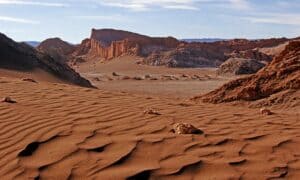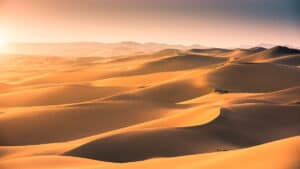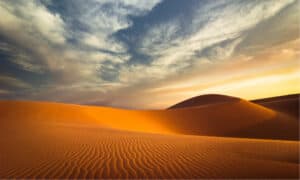The Sahara is a vast, empty land of sand and extreme temperatures. Except for a few places, the Sahara is not suitable for life. But do people live in the Sahara desert?
Yes, people live in the Sahara desert, although the population is low.
The Sahara spans about 3,320,000 square miles throughout Northern Africa. It is roughly the size of the United States. It is the largest hot desert in the world, but not the largest desert.
Although cold, the Antarctic and Arctic deserts are larger than the Sahara. They exceed the Sahara by a couple of million square miles.
Despite being a massive plot of land, few people live in the Sahara. Most residents live in cities or towns in places that are suitable for life. The others live as nomads, traveling from place to place.
1. Cairo, Egypt — 7,734,614 People

The most populated city in the Sahara is Cairo, Egypt. Still, only part of the city is technically in the desert.
©AlexAnton/Shutterstock.com
Cairo, Egypt, is by far the largest city on this list. Yet, we were unsure whether to include it here as the entire city does not sit within the Sahara.
Instead, the Sahara begins at the western edge of Cairo. The Pyramids of Giza signify the end of the metropolitan area of Cairo and Giza. These pyramids also indicate the beginning of the eastern edge of the Sahara.
The three largest cities in all of Egypt are Cairo, Alexandria, and Giza.
2. Giza, Egypt — 2,443,203 People
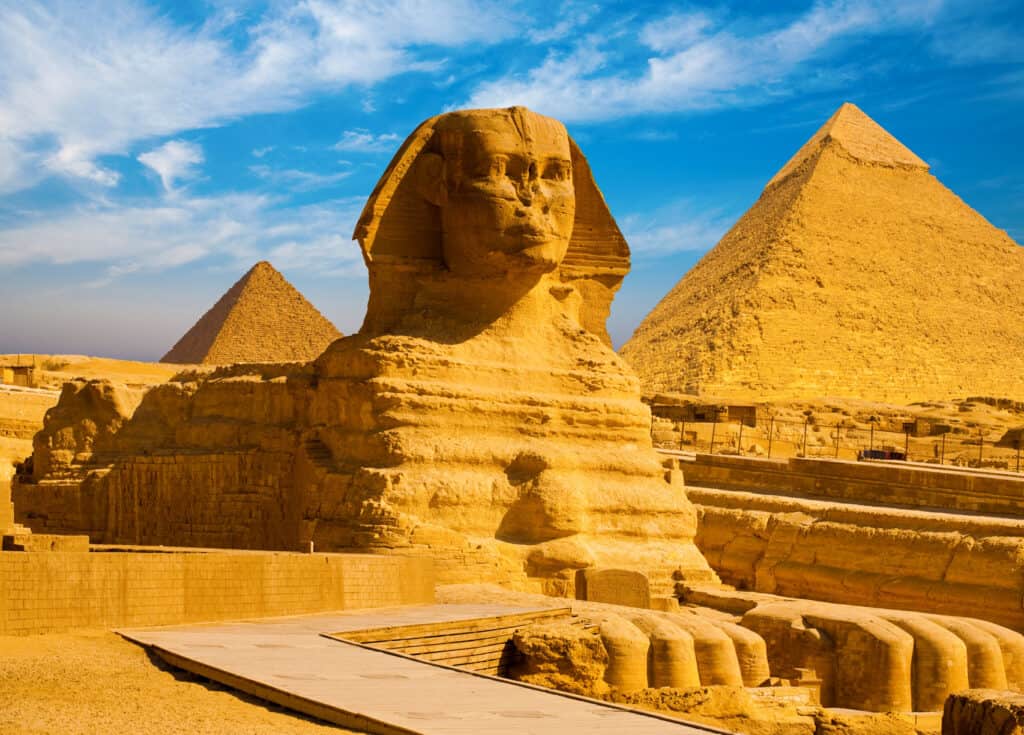
The Great Sphinx is the most famous structure in Giza, Egypt.
©iStock.com/pius99
Giza is one of the most notable cities in Egypt and sits south-southwest of Cairo. The city rests along the west bank of the Nile River.
The most notable feature of Giza is the Great Sphinx of Giza, a massive limestone statue of a sphinx. It is one of the most famous landmarks in all of Egypt.
Giza is known for its modern housing, prosperous tourism industry, and education. There is a zoo, the University of Cairo, and an ophthalmic research institute. Most of Egypt’s movies are also filmed here.
3. Khartoum, Sudan — 1,974,647 People
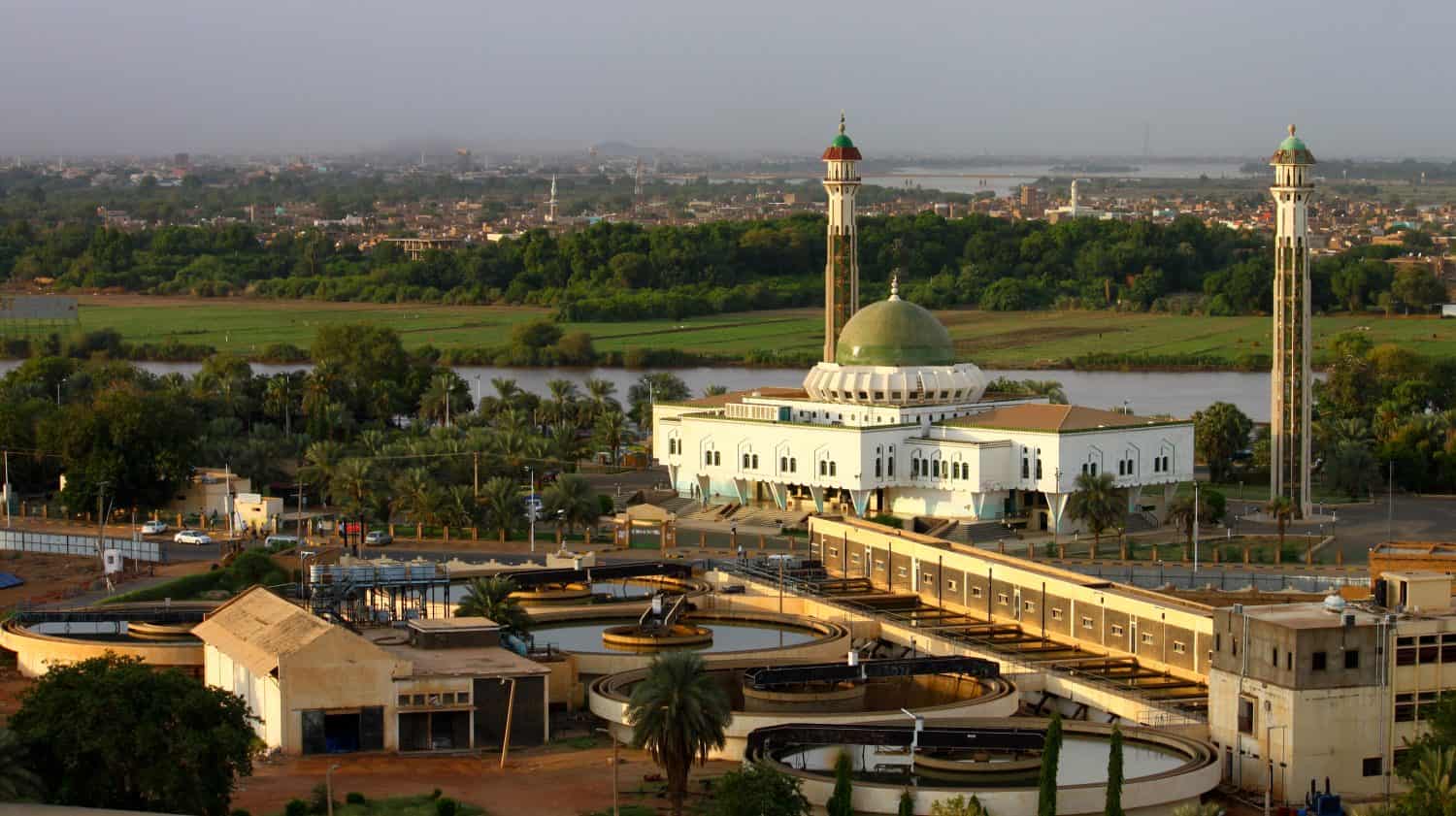
The Al-Mogran Mosque in Khartoum, Sudan.
©Mina Tkla/Shutterstock.com
Sudan is, unfortunately, a country that has gone through many crises, from war to famine. Still, the country is beautiful, with a rich culture.
Khartoum is the capital of Sudan, and it is the most populated city in the country. The city is broken into three sections: Khartoum, Omdurman, and Khartoum North.
The three sections are divided by the Nile River. Khartoum’s location is unique because it sits where the Blue and White arms of the Nile come together to form the Nile River.
Khartoum is a major trading center. They have railways to Egypt, Al-Ubayyid, and Port Sudan. There is also an international airport and lots of travel along the river.
4. Port Sudan, Sudan — 489,725 People

Port Sudan is a major center for external and internal trade.
©Aleksandra Tokarz/Shutterstock.com
Along eastern Sedan is the city of Port Sudan, a city and port that sits along the Red Sea. Port Sudan handles most of Sudan’s external trade. They mainly export cotton, oilseeds, animal hides and skin, senna, and gum arabic.
5. Luxor, Egypt — 422,407 People

Home to many ancient artifacts and structures, Luxor, Egypt is a hot spot for tourism.
©River Nile, Luxor, Egypt/Shutterstock.com
Luxor was once the capital of Egypt for about 1,500 years.
You likely know Luxor by another name — Thebes, as it went by throughout much of history. The ancient Egyptians used to call the city “The City of Hundred Doors.”
The name “Luxor” comes from an Arabic word that means “the palaces.” Today, many refer to Luxor as the “world’s greatest open-air museum.”
Throughout history, Luxor has been home to monuments, famous temples, and tombs.
Here are some of the most famous structures you can see:
- Karnak Temple Complex
- Valley of the Kings
- Valley of the Queens
- Luxor Temple
- Queen Hatshepsut Temple
- Colossi of Menmon
The locals who live in Luxor primarily support themselves through tourism. Millions of visitors come to the city every year to experience the remarkable artifacts and structures.
The city of Luxor even became a UNESCO World Heritage Site in 1979.
6. Sfax, Tunisia — 277,278 People
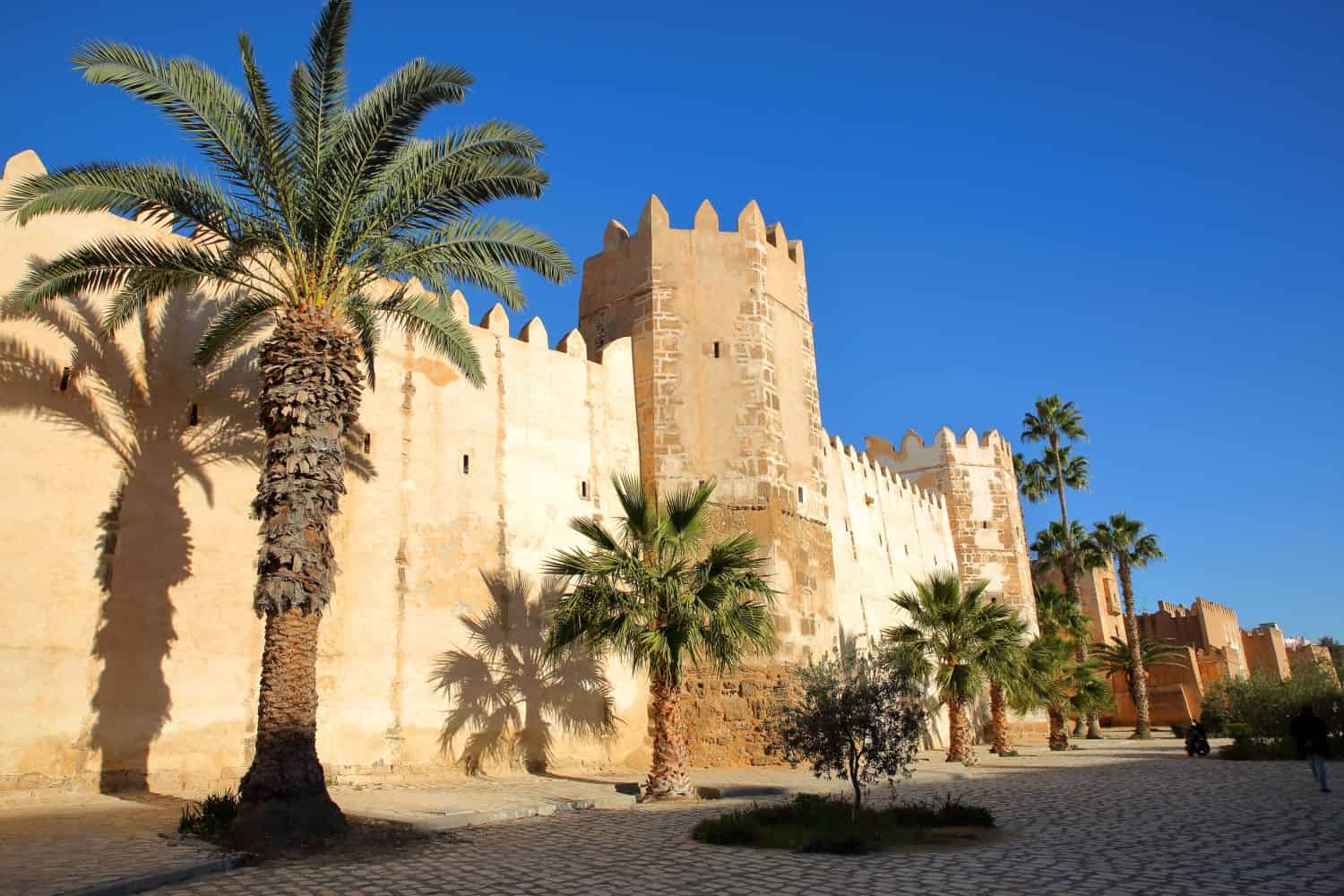
Sfax is home to many ancient artifacts and is a major center for trade.
©Christophe Cappelli/Shutterstock.com
The city of Sfax was built over the ruins of Taparura and Thaenae in AD 849.
The city is most important for the country’s economy. It is a significant source of imports and exports. It supports much of the country’s agriculture of olives and olive oil. The city also processes phosphate and is home to Tunisia’s largest fishing port.
Sfax is home to an archaeological museum. It holds many ancient artifacts from the ancient city of Thanae and other nearby areas. The museum contains artifacts from Islamic, Roman, and prehistoric history.
Here’s Who Lives in the Sahara
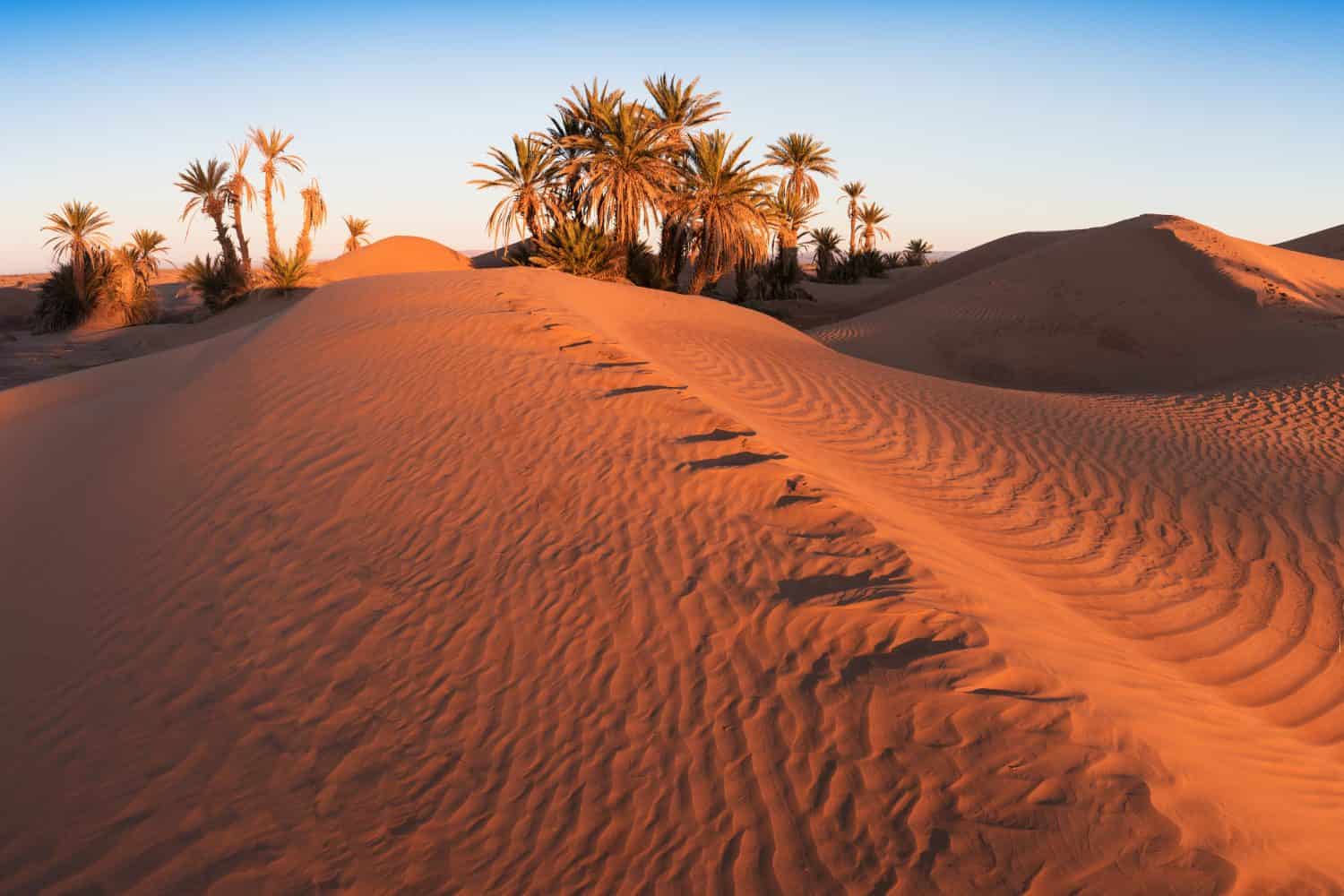
Sahara nomads survive off of oases of water surrounded by palm trees.
©Michal Balada/Shutterstock.com
Life in the Sahara is harsh and inhospitable. Temperatures become scorchingly hot during the day but can drop below freezing at night.
Most people in the Sahara live in cities in the few areas where the desert can support life.
Outside of the Nile Valley, the Sahara is only home to an estimated 2.5 million people.
How the Nomads Live
Those who don’t live in the city live as nomads, traveling from one place to another. The Tuaregs, Toubout, and Moors are a few nomadic tribes that live throughout the Sahara.
Most of the land is sand and dust. Still, there are oases of water where the land is healthy and can support vegetation. Locals typically protect these oases with palm trees.
To survive in the Sahara, people wear loose-fitting clothing. The clothes prevent the quick evaporation of cooling sweat. People also wear head wraps to protect themselves against the sun and flying sand.
Ancient Sahara
The ancient artifacts show that the Sahara may not have always been as dry as it is today.
Archaeologists have uncovered fossils, rock art, and other ancient artifacts. These items suggest the Sahara used to be far more populated. Further, they show that people likely used to live in areas that are no longer habitable.
Summary of the 6 Most-Populated Spots in the Sahara Desert
| Country | City | Population |
|---|---|---|
| Egypt | Cairo | 7,734,614 |
| Egypt | Giza | 2,443,203 |
| Sudan | Khartoum | 1,974,647 |
| Sudan | Port Sudan | 489,725 |
| Egypt | Luxor | 422,407 |
| Tunisia | Sfax | 277,278 |
The photo featured at the top of this post is © Patrick Poendl/iStock via Getty Images
Thank you for reading! Have some feedback for us? Contact the AZ Animals editorial team.




